Tether stablecoin regulations are taking center stage as discussions between Tether’s executives and U.S. officials heat up. Paolo Ardoino, the CEO of Tether, has revealed that the company is exploring the potential of launching a dollar-pegged token tailored specifically for the U.S. market. This move comes as U.S. regulatory bodies aim to establish a framework that prompts compliance among cryptocurrency firms, enhancing the landscape for stablecoin deployment within the country. The importance of Tether’s stablecoin as a possible settlement currency underlines its crucial role in the burgeoning digital economy. As Tether looks to adapt to these evolving U.S. stablecoin compliance requirements, the implications for the broader crypto market, including its role in cryptocurrency regulations, warrant close attention.
In the realm of digital finance, Tether’s involvement in U.S. regulatory frameworks indicates a significant shift towards integrating stablecoins and cryptocurrency operations within established legal parameters. The notion of Tether launching a dollar-pegged token specifically for American consumers highlights an awareness of local market needs and regulatory compliance. This potential move to create a stablecoin as a settlement mechanism underscores the growing importance of such digital currencies in the financial ecosystem. As authorities develop new guidelines for foreign stablecoin issuers, the regulatory landscape is evolving to promote transparency and accountability. Tether’s proactive approach positions it at the forefront of the stablecoin sector, influencing how such digital assets will function within the international market.
Tether Stablecoin Regulations: A Game Changer for the U.S. Market
As Tether, a leader in the stablecoin arena, navigates the complex landscape of U.S. regulations, the potential for a dollar-pegged token specific to the domestic market is becoming a focal point of discussion. Tether’s CEO, Paolo Ardoino, emphasizes that these regulations could provide the impetus for launching a compliant stablecoin that resonates with U.S. financial interests. Such a move could enhance the competitive capabilities of Tether within the U.S. market, allowing it to potentially operate as a trusted settlement currency in various financial transactions. The foresight of these regulatory measures presents an opportunity for Tether to align its offerings with compliance standards, paving the way for broader adoption and integration within the U.S. banking system.
Moreover, as discussions surrounding cryptocurrency regulations intensify, Tether’s proactive approach in engaging with U.S. officials positions it as a key player in shaping the future landscape of stablecoins. By adhering to emerging compliance frameworks, Tether aims to foster confidence among users and investors alike, which is critical in an environment where trust is paramount. These new regulations could redefine how stablecoins are perceived, transforming them into legitimate instruments recognized by governmental bodies and correlating their usage with mainstream financial practices.
In addition to regulatory compliance, Tether’s discussions may also reflect a larger trend towards creating a more organized and secure cryptocurrency market in the United States. With the introduction of new regulations, the framework may require stablecoin issuers, including Tether, to fulfill specific legal stipulations aimed at consumer protection and market stability. As the U.S. moves forward in reinforcing financial security, Tether’s engagement in these conversations not only addresses the needs of regulators but also highlights its commitment to being at the forefront of regulatory advancements in the crypto space. The idea of Tether leveraging regulations to introduce a domestic stablecoin could lead to significant shifts in stablecoin settlement practices and their integration into various sectors.
The Role of Tether in the U.S. Stablecoin Ecosystem
In the evolving landscape of digital currencies, Tether holds a pivotal role as a significant player in the U.S. stablecoin ecosystem. Sought after for its reliability as a dollar-pegged token, Tether’s omnipresence has made it a staple in many trading strategies across cryptocurrency exchanges. Given its substantial market capitalization, which stands at approximately $144 billion, Tether is often utilized as a settlement currency, facilitating the seamless exchange between various cryptocurrencies and fiat currencies. This dominant position positions Tether not just as a cryptocurrency but as a vital instrument in the infrastructure of the U.S. financial market.
Moreover, as discussions about cryptocurrency regulations heat up, Tether’s significance will likely only grow. By potentially launching a domestically compliant stablecoin, it could enhance its operational protocols and ensure adherence to safety standards highlighted by U.S. regulators. This accountability not only legitimizes Tether’s operations but also promotes stability within the broader cryptocurrency market, offering users a safe haven as they transition between volatile digital currencies and the more stable dollar-pegged tokens.
Tether’s leadership in the U.S. stablecoin sphere also indicates a shift in how regulatory bodies view these digital currencies. Rather than perceiving stablecoins as mere speculative assets, regulators are beginning to recognize their potential as vital financial instruments. Tether’s ability to adapt to these regulatory changes and provide an effective settlement currency will be crucial for its continued success. As noted by Ardoino, engaging with U.S. officials shows their commitment to maintaining legal compliance, which reassures users and promotes the acceptance of stablecoins in everyday transactions.
Future of Tether: Navigating Compliance and Competition
As Tether contemplates the introduction of a U.S.-focused stablecoin, navigating the regulatory landscape becomes increasingly crucial. With the impending stablecoin regulations, Tether must evaluate how these compliance measures affect its market strategy and operations within the U.S. Unlike other cryptocurrencies that have experienced regulatory pushback, Tether’s proactive approach could allow it to remain competitive in a rapidly evolving financial environment. By adhering to regulations, Tether not only solidifies its legitimacy but also sets a standard for other stablecoin issuers to follow, potentially leading to a safer trading environment for consumers and investors alike.
The competitive landscape for stablecoins is shifting, and firms that can successfully navigate regulatory requirements will likely emerge as leaders. Tether’s ongoing discussions with U.S. officials indicate its ambition to remain at the forefront, offering a U.S. domestic stablecoin that could serve both retail consumers and institutional investors. This could redefine the role of stablecoins in the broader cryptocurrency context, making them more aligned with traditional financial principles and appealing to a larger audience seeking stability in their investments.
In addition, potential competition from other issuers, including newer projects aiming to capture market share through innovative features or enhanced regulatory compliance, is on the horizon. As Tether pushes forward with its regulatory compliance efforts, establishing its position as a trusted stablecoin could significantly mitigate competitive pressures. The evolution of Tether into a compliant U.S. stablecoin provider could create a blueprint for the future, shaping how all digital currencies are viewed within the financial system. This strategic positioning may not only support Tether’s market dominance but also encourage the adoption of stablecoins as mainstream payment and settlement solutions.
Tether’s User Base Growth Amid Regulatory Developments
With a user base surpassing 400 million, Tether’s remarkable growth can be attributed to its reputation for reliability and its role as a stablecoin that offers dollar-pegged transactions. As Tether navigates through regulatory tumult, attracting more users hinges on its ability to demonstrate compliance and instigate trust within the market. As government bodies enter the fray with new regulations, Tether’s commitment to adhering to these compliance measures will likely bolster user confidence. This trust is particularly vital in a market that has seen several high-profile collapses and scams, wherein security and legitimacy are paramount for both new and seasoned investors interested in the cryptocurrency space.
The emerging regulatory framework is expected to provide additional clarity on how stablecoins should operate, which may further enhance Tether’s appeal to individuals and businesses. With the possibility of launching a compliant U.S. stablecoin, Tether can engage users more effectively by ensuring its offerings align with regulatory expectations. This proactive engagement strategy can convert potential users into loyal stakeholders who see Tether not just as a trading tool, but as a fundamental part of their financial ecosystem.
Additionally, as Tether continues to expand its operations while focusing on regulatory compliance, this might lead to enhanced liquidity and accessibility within the market. The ability to onboard new users efficiently while maintaining strict adherence to regulations is crucial for sustaining growth momentum. Reports indicate that users are looking for stablecoins like Tether that fulfill safety and stability concerns, especially in tumultuous economic climates. As Tether bridges the gap between innovation and regulation, its trajectory is a testament to how adaptable stablecoins can become within the intricate frameworks dictated by U.S. financial authorities.
Tether’s Strategic Moves in the Cryptocurrency Market
Tether’s strategic positioning in the cryptocurrency marketplace is becoming increasingly significant as talks around U.S. stablecoin regulations unfold. As the issuer of one of the most heavily traded stablecoins globally, Tether is not just a bystander; it is an influential player in dictating market dynamics and settling the terms of compliance. By aligning with regulatory authorities and demonstrating a commitment to lawful operations, Tether can fortify its existing user base and attract new customers who appreciate transparency and compliance. This strategic direction could serve as a catalyst for Tether’s growth, enhancing its role as a settlement currency in numerous financial transactions across varied sectors.
Moreover, the potential launch of a U.S.-specific stablecoin is reflected in Tether’s calculation to adapt to emerging market conditions and competitive forces. With the cryptocurrency landscape pivoting towards mainstream acceptance, Tether’s innovations aligning with regulatory expectations could not only preserve its market share but amplify it. By remaining ahead of the curve and initiating new projects anchored in compliance, Tether paves a path that could inspire other companies in the space, forging a better-integrated cryptocurrency ecosystem that emphasizes collaboration between traditional regulatory frameworks and modern financial technology.
Importance of Compliance in Tether’s Future Operations
The importance of compliance cannot be overstated as Tether looks to solidify its presence in the U.S. market with its stablecoin offerings. Rigorous adherence to regulatory standards will be critical in crafting a sustainable operational model that benefits both the company and its users. By engaging in discussions with U.S. officials about compliance and observing existing legal frameworks, Tether can build a foundation of trust that is essential for gaining a competitive edge. As stablecoin regulations develop, Tether’s foresight in compliance will not only enhance its standing but also promote stability in the wider cryptocurrency market.
Furthermore, a commitment to compliance reflects Tether’s awareness of potential regulatory landscapes that are still evolving. By adopting a proactive stance regarding U.S. stablecoin compliance, Tether sets an example for other issuers to follow, embodying a responsible approach to digital currencies. This could significantly reshape how cryptocurrencies interact with traditional finance, creating avenues for safer transactions and broader usage. With Tether leading the charge in compliance, it could ultimately ensure the longevity and resilience of stablecoins in an ever-competitive financial landscape.
Tether and Its Impact on Financial Transactions
Tether’s emergence as a prominent stablecoin has transformed the way financial transactions occur, especially in the cryptocurrency sector. Offering a dollar-pegged token that retains its value, Tether has become a primary medium of exchange, facilitating straightforward transfers between different cryptocurrencies and fiat currencies. As the accepted use of stablecoins grows, Tether’s functioning as a settlement currency is becoming increasingly relevant in everyday transactions, offering users the reliability of a traditional currency while leveraging the efficiency of blockchain technology. This integration could lead to a more streamlined transaction process, benefiting both parties involved in any exchange.
As regulatory frameworks take shape around stablecoins, Tether’s role in promoting accessible and efficient financial transactions is set to expand even further. By potentially launching a U.S.-specific stablecoin that meets domestic regulatory standards, Tether reinforces its value proposition within the financial ecosystem. The prospect of Tether functioning as a regulated settlement currency underscores the shift towards mainstream cryptocurrency acceptance, shaping how businesses and consumers perceive and utilize digital assets in their daily operations. This evolution may be the key to embracing a future where stablecoins play an integral role in finance.
The Integration of Tether into the Mainstream Financial System
Tether is poised to integrate further into the mainstream financial system as regulatory clarity emerges surrounding stablecoin practices. With its potential move to align more closely with U.S. regulations, Tether seeks to bridge the gap between digital currency and traditional finance. This integration is not just beneficial for Tether but can significantly enhance the perception of stablecoins as secure financial products. By demonstrating adherence to compliance measures, Tether can catalyze the broader acceptance of cryptocurrency as a legitimate form of currency within the financial ecosystem.
Moreover, Tether’s incorporation into everyday financial transactions could lead to revolutionary changes in how businesses operate. As Tether becomes a recognized stablecoin tailored for the U.S. market, its utility in facilitating transactions will likely encourage more businesses to accept cryptocurrency as a payment method. Such a trend marks a pivotal moment in the evolution of financial exchanges, suggesting that the marriage of traditional finance and cutting-edge technology is closer than ever. In this scenario, Tether stands at the forefront, ready to lead the way in ushering cryptocurrency further into the fabric of economic activity.
Frequently Asked Questions
What are the latest Tether stablecoin regulations in the US?
The latest Tether stablecoin regulations in the US focus on compliance and the potential creation of a U.S.-specific dollar-pegged token. Tether is currently in discussions with US officials, aiming to align with upcoming regulations concerning stablecoins as they aim to serve as settlement currencies in the domestic market.
How does Tether plan to comply with US stablecoin regulations?
Tether plans to comply with US stablecoin regulations by possibly creating a dollar-pegged token tailored for the US market. The company has stated its commitment to voluntary compliance and ongoing discussions with US authorities to ensure their operations align with local enforcement laws.
What is Tether’s role in the US market regarding stablecoin settlement currencies?
Tether is positioning itself as a key player in the US market by engaging in talks about regulations that could classify its stablecoin as a settlement currency. This move is part of efforts to enhance the competitiveness of domestic stablecoins amidst regulatory changes.
Will Tether introduce a US-specific dollar-pegged token?
Tether has indicated that it may introduce a US-specific dollar-pegged token depending on the regulatory environment. CEO Paolo Ardoino mentioned that if new regulations promote a competitive market for U.S. stablecoins, Tether is likely to develop such a token.
What impact will US regulations have on Tether’s operations?
US regulations could significantly impact Tether’s operations by requiring compliance for foreign stablecoin issuers. Tether is already taking steps to align itself with such regulations to maintain its market position and possibly introduce products tailored to US consumers.
How does Tether ensure compliance with cryptocurrency regulations?
Tether ensures compliance with cryptocurrency regulations by voluntarily adopting practices that align with the law, including onboarding law enforcement agencies like the FBI and U.S. Secret Services. This proactive approach is part of their strategy to positively engage with regulatory bodies.
What is the significance of Tether in the current cryptocurrency regulations landscape?
Tether holds significant importance in the current cryptocurrency regulations landscape as it represents one of the most traded stablecoins globally. Its movements and compliance efforts are closely watched as the US government and regulators evaluate the role of stablecoins in the financial system.
| Key Points |
|---|
| Tether is in talks with US officials regarding stablecoin regulations. |
| CEO Paolo Ardoino hints at a possible dollar-pegged stablecoin specifically for the U.S. market. |
| The discussions suggest that stablecoins could become important instruments for the U.S. economy. |
| Tether currently does not serve U.S. customers but has a significant global presence with $144 billion in circulation. |
| Over 400 million users are part of Tether’s ecosystem, contributing to what Ardoino calls a ‘stablecoin multiverse.’ |
| New U.S. regulations may require compliance from foreign stablecoin issuers like Tether. |
| Ardoino claims Tether’s compliance efforts are already proactively in place, including working with U.S. law enforcement. |
Summary
Tether stablecoin regulations are becoming increasingly relevant as the U.S. government explores new frameworks for stablecoins. CEO Paolo Ardoino has acknowledged ongoing talks with U.S. officials regarding these regulations, indicating the potential for Tether to introduce a competitive dollar-pegged stablecoin that caters specifically to the U.S. market. With over 400 million users worldwide and significant market presence, Tether’s adaptability in response to regulatory changes could solidify its role as a key player in the evolving stablecoin landscape.
Tether stablecoin regulations are at the forefront of discussions between Tether’s executives and US officials, highlighting the potential for their dollar-pegged token to serve as a vital settlement currency within the domestic market. Tether CEO Paolo Ardoino has indicated that the company may launch a new stablecoin tailored specifically for the U.S., contingent upon future compliance measures that could enhance competitiveness. With stablecoin compliance becoming increasingly crucial in the U.S. regulatory landscape, Tether’s proactive approach could redefine its role in the US market, currently dominated by its existing stablecoin ecosystem. As cryptocurrency regulations evolve, Tether’s significant trading volume, exceeding $144 billion, positions it uniquely to adapt and thrive amid rising scrutiny. This focus on U.S. regulatory alignment could reshape how stablecoins are utilized in financial transactions, emphasizing their potential as mainstream digital assets.
Discussions surrounding Tether’s compliance with US standards reflect a broader trend in the stablecoin landscape, where regulatory frameworks are increasingly influencing operational strategies. As Tether navigates potential US regulations, the conversation highlights the importance of stable assets that can act as a reliable digital medium of exchange. The prospect of a specifically designed stable asset for the American market underscores the significance of proper oversight in establishing customer trust and market stability. As global attention turns towards the regulatory aspects of cryptocurrencies, Tether’s engagement not only aims to adhere to compliance but also sets a potential precedent for other digital currency issuers. This strategic positioning reinforces the notion that stablecoins like Tether could soon play a pivotal role in the emerging financial ecosystem.
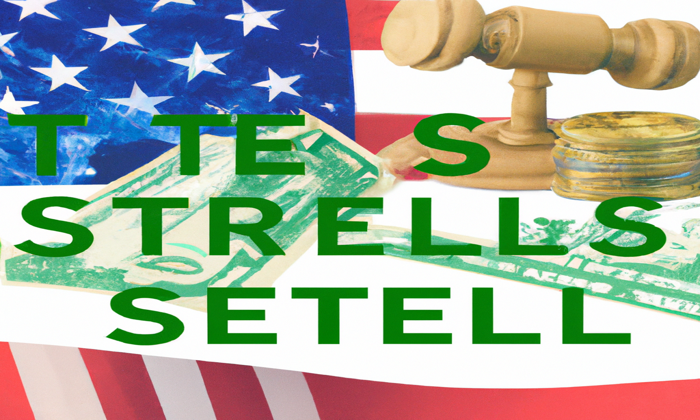

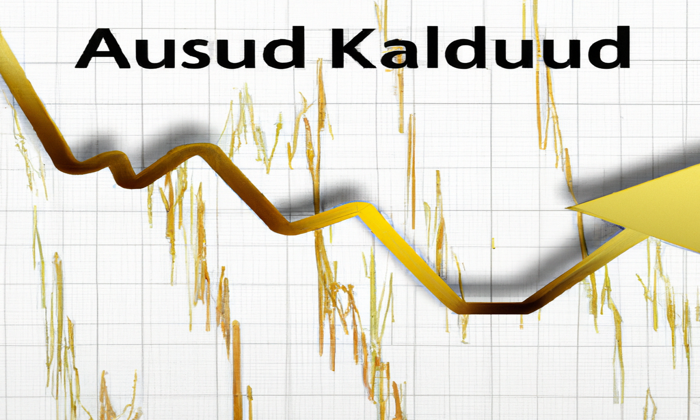

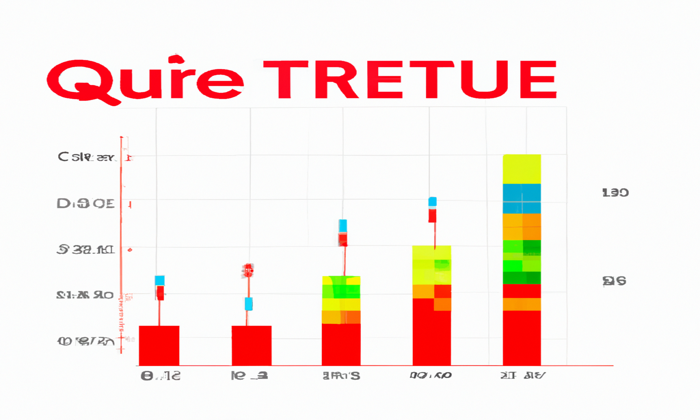






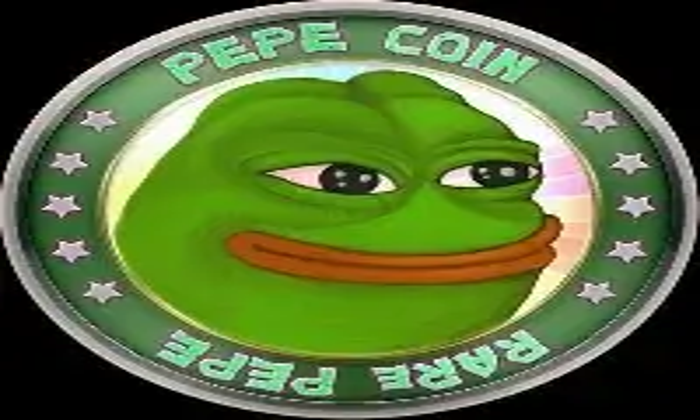
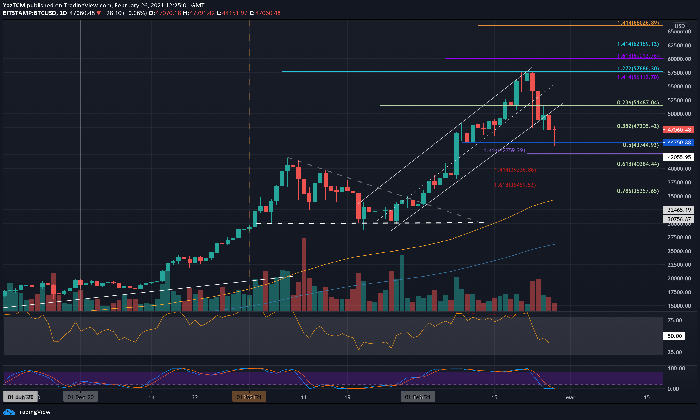

Leave a Reply